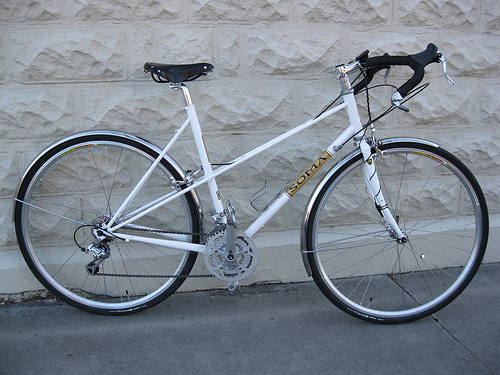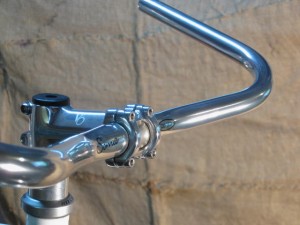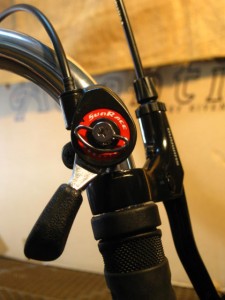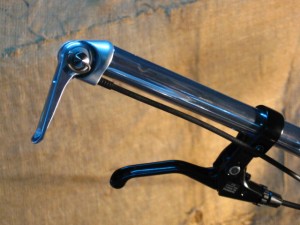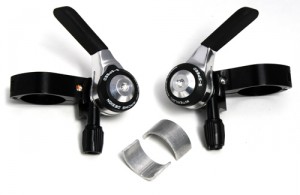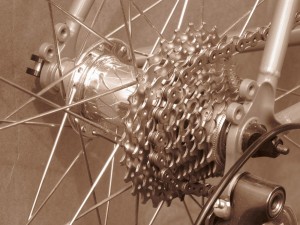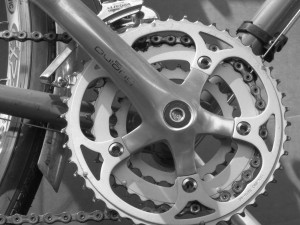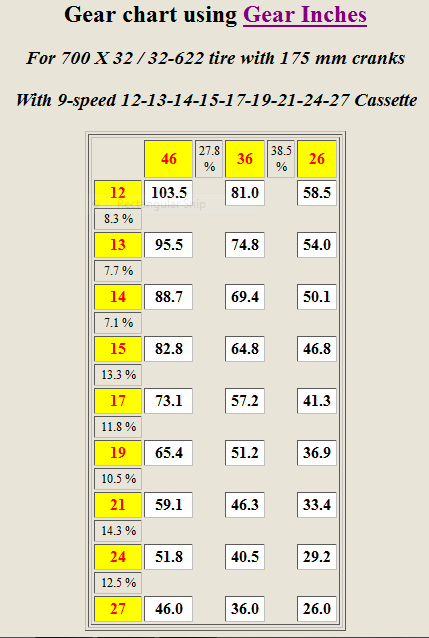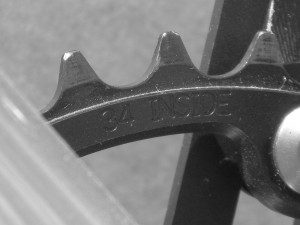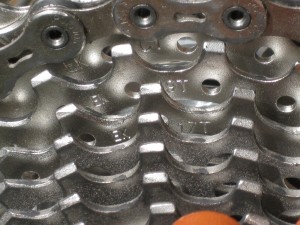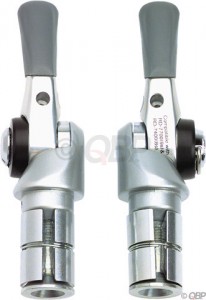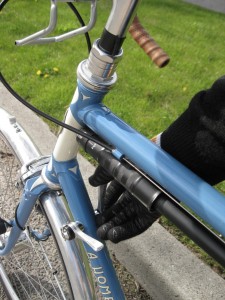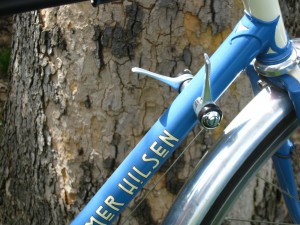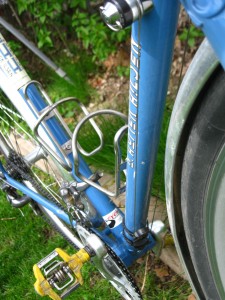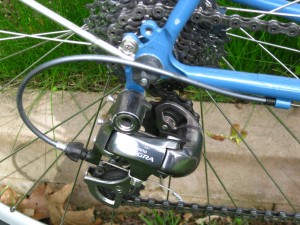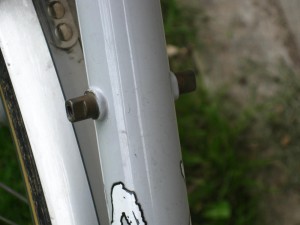So I had a Bridgestone MB-1 circa 1992, I think….might have been ’93. A poor fellow, down on his luck, or perhaps his brain addled from meth or crack cocaine, determined that he was deserving of such a bike. And so he took it. The Bike Hermit is always happy to help those less fortunate than himself. I hope the buzz that person received via my bike made his efforts worthwhile. That bike had Shimano XT top mount thumb shifters which remain my favorite gear shifting solution for straight or swept back handlebars. The shape was perfect. They could as well be called knuckle shifters because the cable tension releasing motion was just a twist of the hand with the index finger knuckle against the lever. Simple, intuitive and unobtrusive.
Even though the great and powerful Shimano decided to make those shifters obsolete others have stepped in to fill the void. Paul Component Engineering makes the Thumbies which are made to be used with the levers cannibalized from Shimano or Sram bar-end shifters.
These are great as long as you have some bar-end shifters. Otherwise it’s sort of an expensive option.
IRD or Interloc Racing Design (Racing. I know, right? But they make a lot of cool stuff) makes two versions of top-mount shifters- one version is friction only and will work with almost any rear cluster. The other version uses indexing for the rear derailleur shifter and only works with 9 speed cassettes.
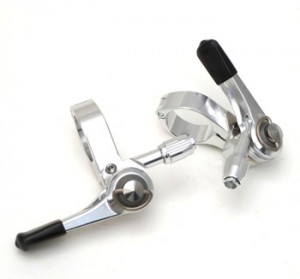
I’ve also been fascinated with the idea of mounting these on drop bars. On the tops and near the stem where they will be out of the way but easy to use. I had a Long Haul Trucker to put together last week and decided to try the IRD XC-Pro 9 speed shifters. The fixtures clamped to the 26.0 mm section of the handlebar without using the included shims (made for clamping to a thinner, mountain bike style bar). Offsetting the two levers slightly kept the cable housings from interfering with each other. Even so, the cable routing was a little wonky but I don’t think it looked too bad. With a little judicious trimming the cable housing could be made to fit close enough to the head tube of the bike that even a front rando bag such as a Gilles Berthoud would fit.
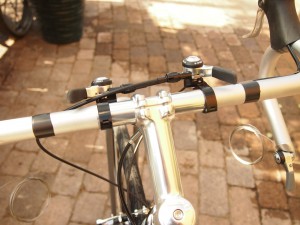
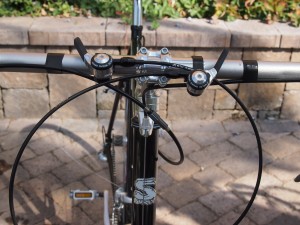
I took the bike out for a ride and I have to say I was excited by how well the setup worked. The downtube shifters on my touring bike are the ultimate in simplicity but there have been times when taking one hand off the bars to shift did not seem like the most prudent thing to do. Top mount shifters on drop bars instead of bar end shifters would even preclude the need to move one’s hand to the end of the drops to shift. The more I think about it the more sense it makes. One downside could be the room these take up on the bars. Especially if a person wants to mount a computer and/or a headlight there. But the great thing about being in the bike industry is that this means there is a market thus created for handlebar extensions on which to mount those things. Actually, maybe one of those bar extensions would work for mounting top mount shifters. Hmmmmm…more experimenting and blog posting forthcoming.
Something along these lines perhaps:


